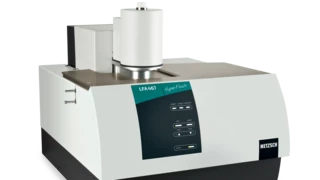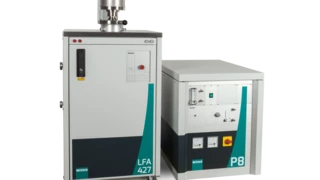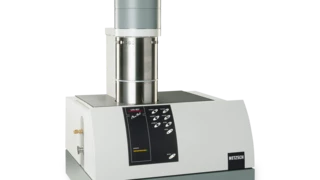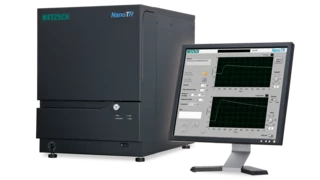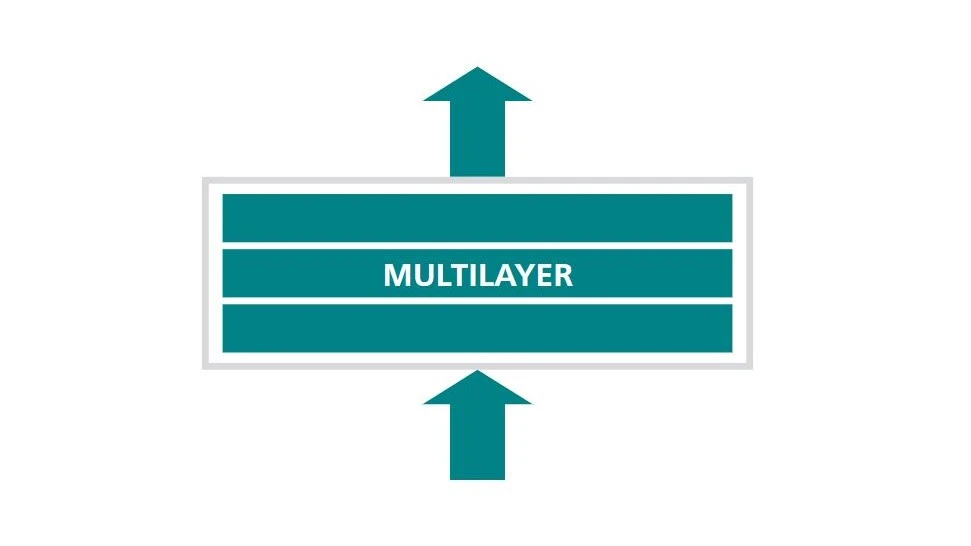
15.01.2024 by Fabia Beckstein, Aileen Sammler
Assessment of the Feasibility of 2- and 3-Layer Measurements by Means of Laser Flash Analysis
The Laser/Light Flash Analysis (LFA) is a widely used method for determining the Thermal DiffusivityThermal diffusivity (a with the unit mm2/s) is a material-specific property for characterizing unsteady heat conduction. This value describes how quickly a material reacts to a change in temperature.thermal diffusivity and conductivity of materials. The front side of a thin, disc-shaped specimen is heated with a short laser or light pulse. With an infrared detector, the temporal course of the resulting temperature increase on the rear surface of the sample is measured. From this curve, the Thermal DiffusivityThermal diffusivity (a with the unit mm2/s) is a material-specific property for characterizing unsteady heat conduction. This value describes how quickly a material reacts to a change in temperature.thermal diffusivity can be determined. The LFA method is particularly effective for homogeneous, isotropic samples. [1]
The challenge in applying LFA to 2- or 3-layer systems is the complexity of heat transfer in these multilayer structures. Precise sample preparation is essential for accurate measurements. In addition, the evaluation of the measurement data requires software with special models for 2- and 3-layer measurements and an in-depth understanding of the interpretation of measurement signals. NETZSCH Analyzing & Testing shows how it works.
Read our latest White Paper about the feasibility of 2- and 3-layer measurements by means of Laser Flash Analysis and get answers to the following questions:
- Which parameters can be determined in the 2-/3-Layer measurement?
- Which properties of the layers must be known?
- What are the requirements for the layers, for example, in terms of thickness?
- How to interpret the measurement results and signals?
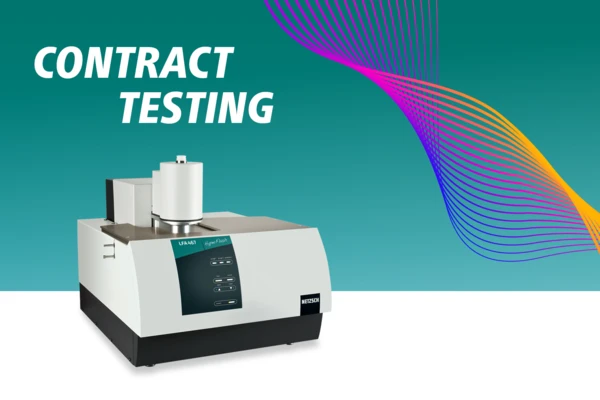
Would like to test our Contract Testing Services for LFA Measurements?
Visit and test our Application Laboratory for Laser Flash Analysis and Thermophysical Properties! In our applications laboratory in Selb, Germany, we have the entire portfolio of the latest NETZSCH laser flash analysis instruments in use, like the LFA 467 HyperFlash®®, the LFA 467 HT HyperFlash or the LFA 427. With these instruments in our lab, we cover a broad temperature range from -100°C to 2000°C. Measurements can be made in inert, oxidizing or reducing atmospheres over the entire Thermal ConductivityThermal conductivity (λ with the unit W/(m•K)) describes the transport of energy – in the form of heat – through a body of mass as the result of a temperature gradient (see fig. 1). According to the second law of thermodynamics, heat always flows in the direction of the lower temperature.thermal conductivity range from 0.1 W/(m·K) to 4000 W/(m·K). You will receive high-precision measurement results and valuable interpretations from us in the shortest possible time. Learn more...

